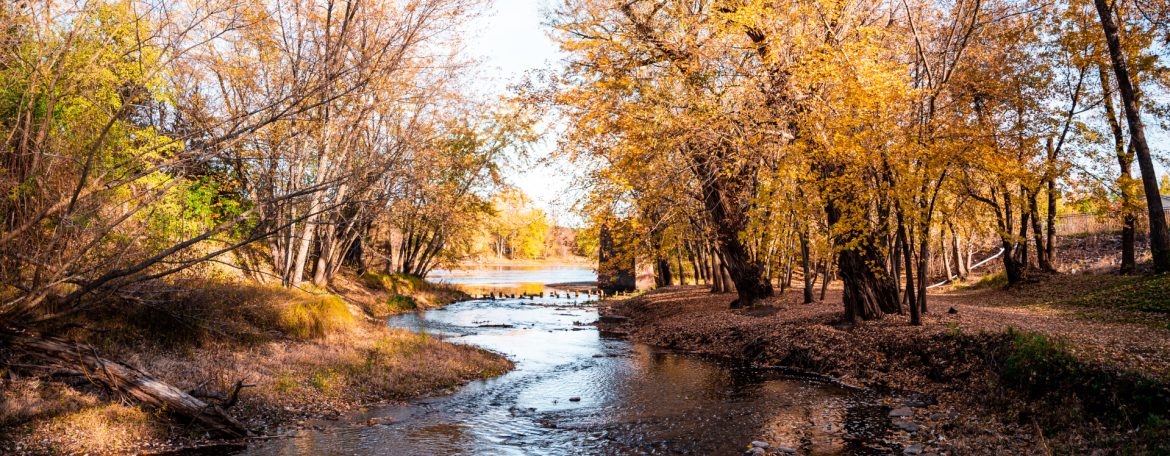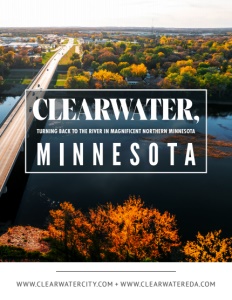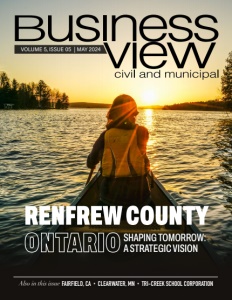Clearwater, Minnesota
Turning Back to the River in Magnificent Central Minnesota
Paving the way for a thriving and interconnected community.
Balanced on Wright County’s extreme northern tip, near the junction of the Clearwater and Mississippi Rivers, lies Clearwater, Minnesota.
Known as “Suland” to the Indians and “The Big Woods” to the newcomers, this settlement west of the Mississippi began in 1851 after a treaty with the Sioux Indians. Formed on a bluff overlooking the two magnificent waterways, Clearwater was well populated by 1856. The same year, the first three-inch manilla rope ferry cable was strung across the Mississippi.
Leveraging a fortunate location and nature’s gifts, the city’s goal is to attract secondary businesses that complement existing establishments. By enhancing infrastructure and creating inviting public spaces, Clearwater aspires to be a destination to enjoy food, outdoor activities, and the waterfront.
All made possible by the Mississippi River.
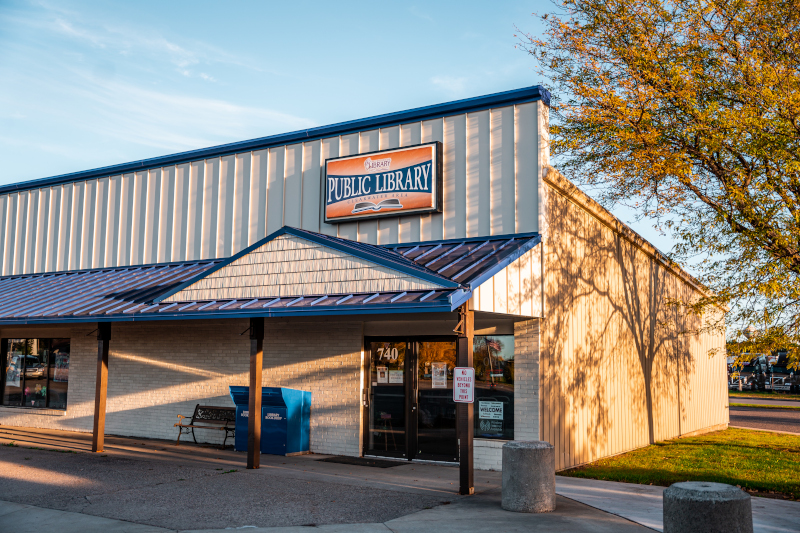
Turning Back to the River – Natural Resource Utilization
The Mississippi River, once the backbone of industrial America, has undergone a remarkable public perception transformation.
“When St. Cloud, Sartell, Little Falls, and Clearwater were built in the 1800s, the Mississippi was a transportation waterway. It wasn’t great—sewage, logs, and barges went down it. You didn’t want to look at it,” states Andrea Lawrence, Mayor of Clearwater. Consequently, cities turned their backs to the river, focusing on the practical rather than the aesthetic or recreational potential.
However, recent decades have seen a shift. Often referred to as “Turning back to the river,” this renaissance has led to a renewed appreciation of the legendary river as a valuable community asset, promoting boating, fishing, and picnic activities.
Focused urban revitalization is reorienting cities towards the Mississippi, recognizing the potential to enhance life quality and attract tourism. This involves redeveloping, improving access, and integrating the river into the cultural and recreational community fabric.
The magical Mississippi River is now celebrated for its scenic beauty and recreational opportunities.
Clearwater’s recent acquisition of a 30-foot-wide lot along the old railroad presents an opportunity to create a public space dedicated to leisure and nature. Lawrence says, “It is baby steps, because it costs money and it takes planning, but we want to make that into a park this year with a walk-in canoe and kayak landing and continue developing that into something bigger.”
A unique concept under consideration is the establishment of a riverfront municipal brewery. This attraction will offer a distinctive experience, allowing visitors to arrive by watercraft and enjoy locally crafted beverages. Lawrence says, “Why not have a municipal brewery on the river? Who wouldn’t want to kayak right up to that? You will literally canoe from St. Cloud up to it. That is the pie in the sky goal.”
Clearwater also invests in local sports facilities to enhance resident engagement and sports tourism. The municipality boasts a well-maintained baseball field that meets competitive standards, hosting games and tournaments.
Additionally, Clearwater offers a 36-hole disc golf course in one of five parks, along with a private pay-to-play course.
Mayor Lawrence’s vision for a municipal brewery on the river is a bold example of how Clearwater is leveraging its unique assets. By turning the city back to the river and capitalizing on the future that the Mississippi offers, Clearwater is setting the stage for vibrant and diverse commercial and recreational sectors.
Economic Diversity and Business Growth
A prime location and robust infrastructure lay the groundwork for the emergence of secondary businesses that cater to travelers and residents. The Clearwater Travel Plaza provides ample semi-truck parking and e-charging bays, confirming the commitment to accommodating the needs of transient travelers.
However, the potential for growth in this sector is exponential.
Clearwater’s vision includes attracting auto repair shops, retail outlets, and entertainment venues to complement existing ones. Many success stories that reflect a healthy and thriving economic environment mark the city’s business landscape.
Businesses such as T. O. Plastics, which sponsors community events like Heritage Days, and Kwik Trip, are prime examples of the municipality’s supportive climate. “Kwik Trip expanded shortly after moving in. My understanding is that Clearwater is one of Kwik Trip’s highest volume locations for diesel fuel in the state,” states Lawrence.
Coborn’s, a local grocery store, has also reinvested by adding a Caribou Coffee and updating its drive-through, demonstrating market confidence.
These reinvestments and expansions signal to potential entrepreneurs that Clearwater is a place where businesses can, and do, flourish. Lawrence says, “Businesses do updates, fix their facades, or have new signage to show they are successful.”
Clearwater’s forward-thinking approach is straightforward in its annexation of land for commercial development. The recent acquisition of acreage has led to the establishment of Central Minnesota Cold Storage and Versatile Transport, LLC.
Combined with community event involvement and recreational amenities, these efforts create a dynamic environment where commerce succeeds and contributes to Clearwater’s prosperity. “If you come here, you can succeed. It is proven by looking at our other businesses,” says Lawrence.
Community Engagement and Civic Events
The Clear Valley Business Connection (CVBC) and the Economic Development Authority (EDA) play pivotal roles in nurturing relationships and growth.
These organizations are the linchpins in creating a network for local enterprises, facilitating introductions, and fostering collaborations that lead to mutual success. Lawrence says, “The Clear Valley Business Connection, as well as the EDA, does phenomenal work.”
The EDA interviews local businesses, understanding their needs, and providing resources to help them thrive. Recent efforts have focused on strengthening relationships by celebrating milestones such as the 35th anniversary of Authority Fence and Deck.
Success stories like T. O. Plastics, which have been operational for 75 years, are not individual triumphs but collective achievements that inspire pride and confidence in the economy.
Companies deeply invest in lifestyle, as evidenced by T.O. Plastics and other businesses sponsoring beloved events such as Heritage Days and the parade. “The Fire Department sponsors an annual Easter egg hunt,” states Lawrence.
The city’s local ownership preference takes root in the belief that locals are more likely to reinvest and contribute to the distinct identity. By championing regional enterprise, Clearwater ensures the fiscal landscape remains diverse and reflects the residents’ values.
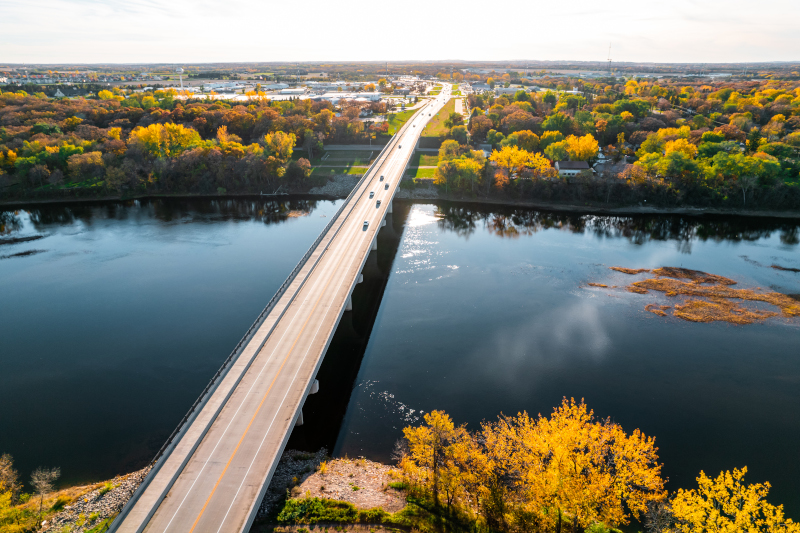
Transportation and Infrastructure Development
Clearwater’s transportation hub is poised for renovation to accommodate the growing needs of travelers and residents. The hub, which features the Clearwater Travel Plaza and truck services by Blaine Brothers, will enhance its offerings with additional services and electric charging bays.
Working with the Department of Transportation (DOT), the expansion will cater to the increasing number of Electric Vehicles (EVs) on the road, providing ample charging options. This positions Clearwater as a forward-thinking community ready to welcome enterprises that serve both transient and local populations.
The city recognizes the importance of active transportation and invests in developing infrastructure needs.
Highway 24 is slated for substantial improvements, including the construction of a pedestrian/multi-use path over I-94. This development is part of a broader initiative to create safer and more accessible routes for non-motorized traffic. Lawrence says, “One of the reasons I ran for city council eight years ago was I thought it was really silly that I lived south of I-94, a mile from the Dairy Queen, and my family could not safely ride bikes from our neighborhood to there.”
The improvements to Highway 24 are not only about enhancing mobility but also about improving the life quality of residents. The path will ensure individuals safely cross over I-94, connecting communities and delivering a more walkable and bike-friendly environment.
But the goal is not only to enhance safety but also to stimulate business growth by making Clearwater more accessible and navigable. “It will help businesses moving in and make right and left turns on Highway 24 easier. It is going to be safer for everybody,” states Lawrence.
The city actively works with various government levels to ensure projects are efficient and effective. This collaboration is essential for securing funding, aligning goals, and managing the complex logistics involved in infrastructure development.
Clearwater’s Future is Grounded in the Past
Clearwater takes immense pride in its long-standing entrepreneurs, recognizing their contributions to the area’s image and economy. The city celebrates these businesses, acknowledging that their longevity and prosperity are testaments of the supportive environment Clearwater offers.
By working together, the CVBC and the EDA meet the community’s needs and enhance the overall transportation network, leading to economic vitality, walkability, and safety.
Turning back to the river, back to the past, and back to simpler times, Clearwater is finding renewed strength and economic success in the Mighty Mississippi.
The City of Clearwater is turning back to the river, and the river is giving back.
AT A GLANCE
Clearwater, Minnesota
WHAT: A small town sporting a “big city” attitude.
WHERE: Wright County, Northern Minnesota, U.S.A.
WEBSITES: clearwatercity.com | clearwatereda.com
